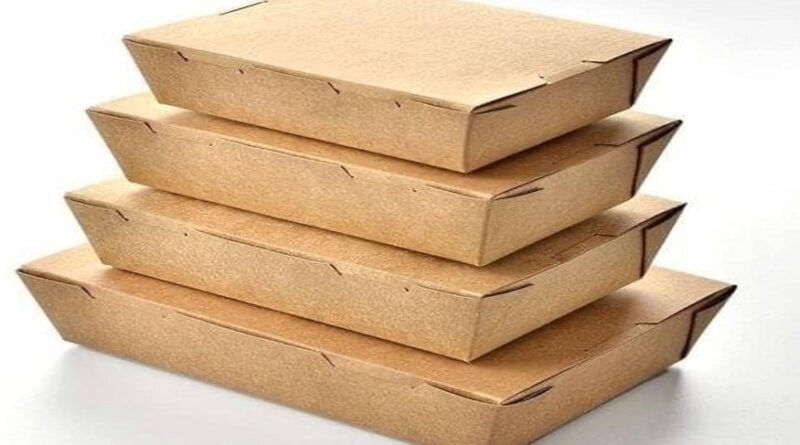How to Design Food Boxes That Are Safe for Kids
When it comes to packaging food for children, safety should always come first. Kids are naturally curious, and while that’s a wonderful part of childhood, it can also make them vulnerable to packaging that isn’t designed with their safety in mind. Food paper boxes are widely used in schools, takeaways, and home deliveries, especially for snacks, lunches, and treats meant for children. While these boxes are lightweight and eco-friendly, they must be thoughtfully designed to avoid choking hazards, sharp edges, harmful materials, or confusing labels.
Child-safe packaging isn’t just about following rules—it’s about caring for the well-being of young customers. Parents and guardians feel more confident when they know their kids are getting food in safe, easy-to-handle packaging. In this article, we’ll explore 10 smart ways to design food paper boxes that are safe for children—from using non-toxic materials to adding fun yet secure features. Let’s dive into how food paper box can protect and delight young eaters.
Use Non-Toxic and Food-Grade Materials
The first and most important step is to use only food-safe, non-toxic materials. Children may directly touch or sometimes even chew on packaging, so it’s critical that the paper box is made from materials free of harmful chemicals like BPA, lead, or phthalates. Always choose certified food-grade paper and inks. Plant-based inks and water-based coatings are safe alternatives that also support eco-friendliness. This ensures that even if the child puts the box in their mouth, there’s no risk of chemical exposure.
Avoid Small Detachable Parts
Children under the age of three are especially at risk of choking on small items. Packaging should not have loose stickers, detachable toys, clips, or buttons that can come off easily. The box design should be smooth, with all parts securely attached. Even if decorative elements are used, they should be printed or glued in such a way that they cannot be peeled off or swallowed.
Create Easy-to-Open but Secure Locks
Young children may struggle with boxes that are too tightly sealed, while unsafe locks could cause spills or even finger injuries. A child-safe food paper box should have easy-to-open but secure closures—like soft-lock tabs or push-flap lids that don’t require sharp tools or force. Magnetic or Velcro-style paper closures can also be a safe and clever option. The goal is to ensure that the box is simple for kids but also prevents accidental opening during transit.
Use Rounded Edges and Soft Folds
One common design mistake in food packaging is using sharp edges or hard creases that can scratch or poke children’s fingers. A child-safe design uses rounded corners and soft folds, which not only reduce the risk of injury but also make the box look friendlier and more appealing. Smooth edges add a touch of safety without sacrificing aesthetics and are easier for small hands to handle.
Include Clear and Fun Safety Instructions
Instructions on how to open and use the box should be clear, simple, and even fun. Use pictures, bright colors, or cartoon characters to show steps visually. Avoid complex text or small fonts. If heating instructions or allergy warnings are included, make sure they are bold and easy for adults to notice too. Clear labeling prevents misuse and encourages safe habits.
Ensure Eco-Friendly and Breathable Design
Children often eat warm or moist food items that need to stay fresh. A well-designed child-safe paper box should allow minimal ventilation to avoid steam buildup while still keeping food protected. Adding small breathable holes can prevent overheating or sogginess, making the food more enjoyable and safe to consume. Also, using recyclable and biodegradable paper boxes teaches kids about environmental responsibility from a young age.
Make It Size-Appropriate for Kids’ Portions
Large or bulky boxes may overwhelm a child or cause accidental spills. A child-safe food packing box should be proportioned to a child’s meal size, making it easier for them to hold and manage. Small hands need small boxes. Keeping the packaging compact and lightweight ensures comfort and control, especially in lunch settings like schools or picnics. Plus, smaller boxes mean less waste and more efficient use of materials.
Add Tamper-Evident Seals
To ensure the safety and hygiene of the food, use tamper-evident seals that are easy to break but hard to miss. This gives parents peace of mind that the food hasn’t been touched or tampered with. These seals should not be choking hazards themselves and should be designed to peel off easily or tear safely when the box is opened. A broken seal is an easy visual signal that something might be wrong with the packaging.
Make It Fun and Educational
Safe packaging doesn’t have to be boring. In fact, it should be engaging for kids! Add interactive, educational, or playful designs that spark imagination. For example, boxes can feature puzzles, coloring areas, or short stories. This keeps kids engaged while they eat and also distracts from any rough handling of the box. However, ensure that all features are printed directly on the box and not added as removable items.
Test with Real Kids Before Launching
Finally, no design is truly child-safe unless it’s been tested by children themselves. Before mass production, let a small group of kids and their parents use the box in real-life situations. Observe how they open, handle, and dispose of the packaging. Use their feedback to make adjustments. This user-centered approach helps catch potential risks early and ensures that your design is truly functional and safe for everyday use.
Designing food paper boxes from cup paper suppliers that are safe for children is both a responsibility and an opportunity. It’s about protecting young users while also creating a fun, easy, and delightful experience for them. From choosing non-toxic materials to designing rounded edges, secure closures, and engaging visuals, each decision plays a role in the overall safety and usability of the packaging. With more parents relying on pre-packed meals and snacks for their kids, businesses that prioritize child-safe packaging will earn greater trust and loyalty. A box may look simple, but when it’s designed with care and creativity, it can make a big difference in keeping children safe and happy.

